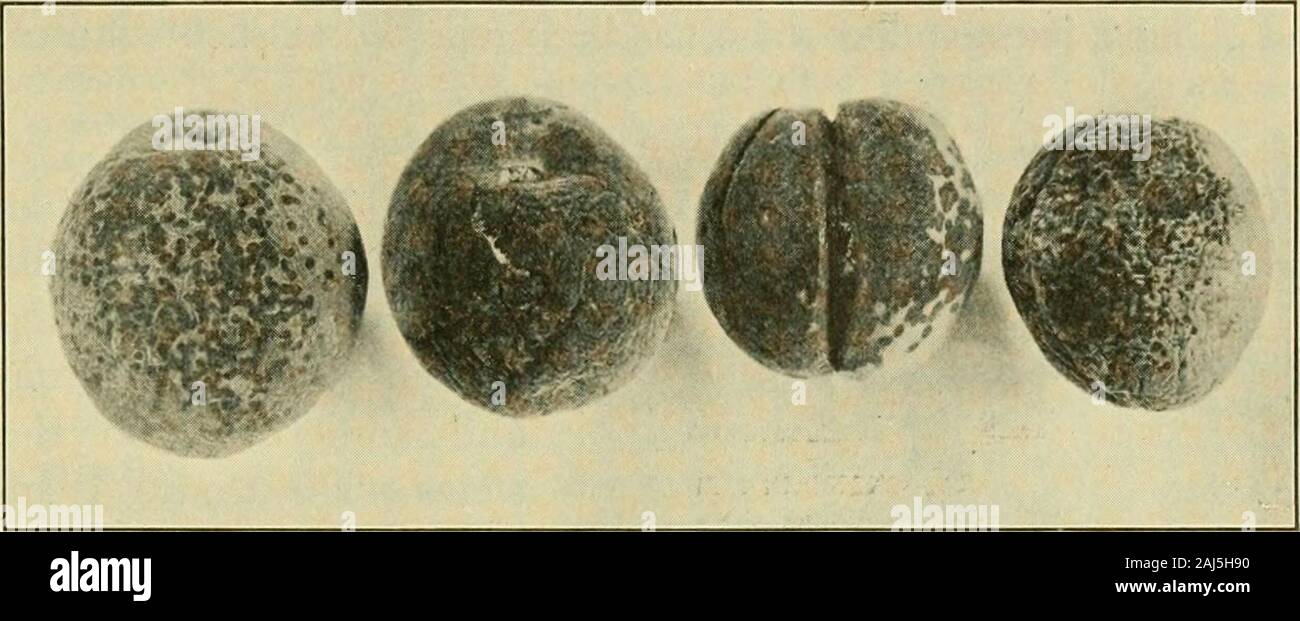Fungous diseases of plants . practicable. It would seem that varietal resistance will in timeoffer the safest means of control. X. POLYTHRINCIUM Polythrincium Trifolii Kze. Sooty spot of clover. This fungusis very generally distributed upon certain species of clover, notablyred clover {Trifoliu7Ji pratcjisc), in many parts of the world. Thewavy or spiral character of the conidiophores and the sooty orfuliginous color of conidia and conidiophores are characteristic.This species is the only one which has been described in the genus.On account of the characteristics and habits of the mycelium and

Image details
Contributor:
The Reading Room / Alamy Stock PhotoImage ID:
2AJ5H90File size:
7.1 MB (319.8 KB Compressed download)Releases:
Model - no | Property - noDo I need a release?Dimensions:
2471 x 1011 px | 41.8 x 17.1 cm | 16.5 x 6.7 inches | 150dpiMore information:
This image is a public domain image, which means either that copyright has expired in the image or the copyright holder has waived their copyright. Alamy charges you a fee for access to the high resolution copy of the image.
This image could have imperfections as it’s either historical or reportage.
Fungous diseases of plants . practicable. It would seem that varietal resistance will in timeoffer the safest means of control. X. POLYTHRINCIUM Polythrincium Trifolii Kze. Sooty spot of clover. This fungusis very generally distributed upon certain species of clover, notablyred clover {Trifoliu7Ji pratcjisc), in many parts of the world. Thewavy or spiral character of the conidiophores and the sooty orfuliginous color of conidia and conidiophores are characteristic.This species is the only one which has been described in the genus.On account of the characteristics and habits of the mycelium andof the stroma sometimes produced, it has been assumed that theperfect stage would be a species of Phyllachora, and the plantactually bears also the name Phyllachora Trifolii (Pers.) Fckl. FUNGI IMPERFECTI 299 XI. PEACH AND APRICOT SCAB CladosporiiDti carpopJiiliDii Thiim. Arthur, J. C. Spotting of Peaches. Ind. Agl. Exp. Sta. Built. 19: 1-8. figs. 1-3. 1889.Chester, F. D. Peach Scab. Del. Agl. Exp. Sta. Rept. 8: 60-63. 1896.. Fig. I Peach Scau on White-fleshed Fruit This fungus is responsible for the well-known peach scab, adisease common throughout the country on peaches, and also onapricots. It forms, as a rule, numeroussmall, circular, sooty spots, sometimesconfined to one portion of the fruit andat other times scattered over the wholesurface. It is so common upon thepoorer grade of market fruit that dur-ing an ordinary season practically noneof the second or third quality fruit, es-pecially that with white pulp, is freefrom it. The spots may become scabbyin form, and coalesced into large irreg-ular areas, and as a result of the injurysevere cracking of the fruit may occur(Fig. 133). Twigs and leaves may alsobecome affected. On the latter distinctspots are produced, often accompaniedby the falling out of the affected areas, as with many other fungi, thus leaving ^ , , 1 rr /^ 1 • 1 Fig. 134. Cladospqrwm a shot-hole enect. (Jn the twigs the carpophilum